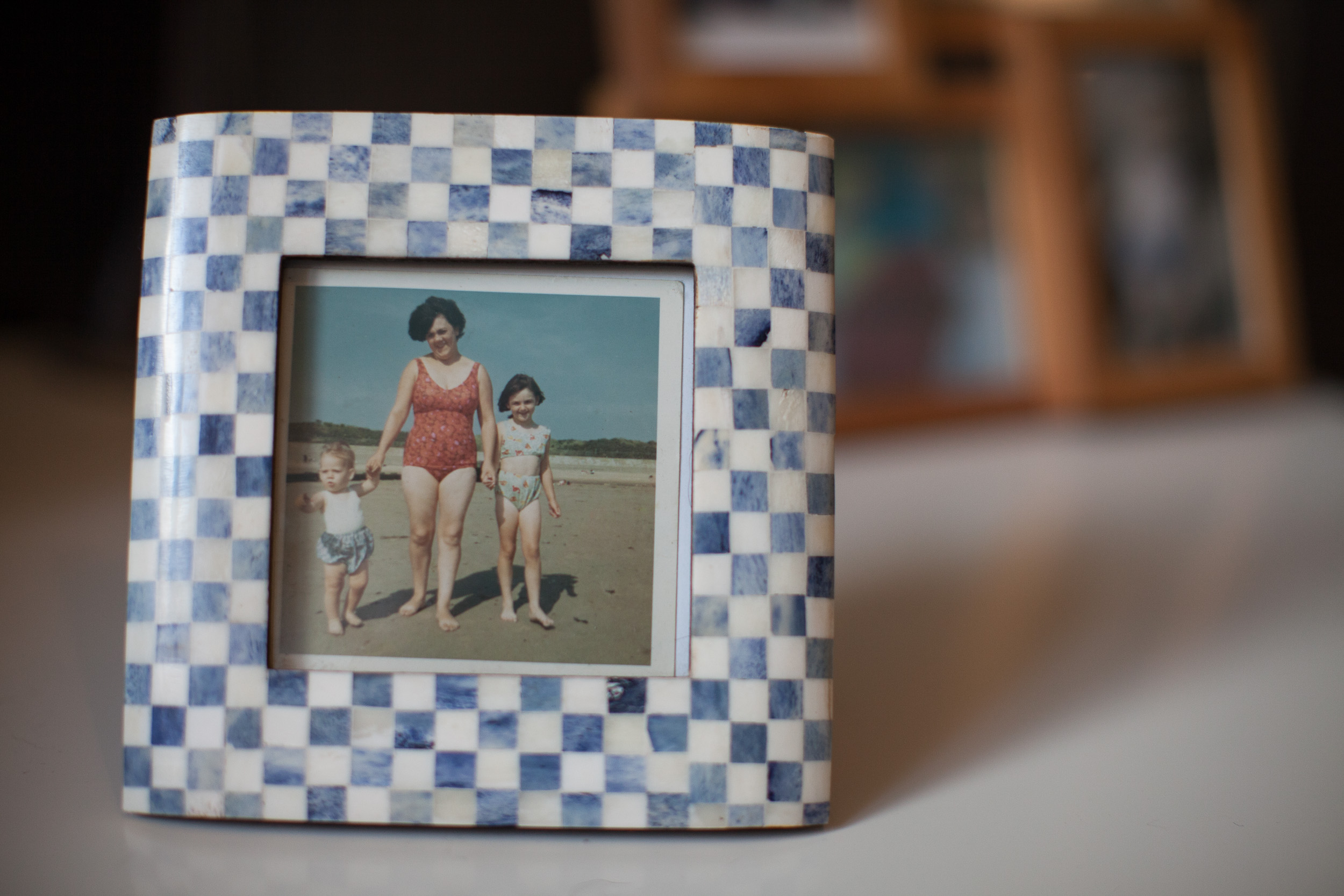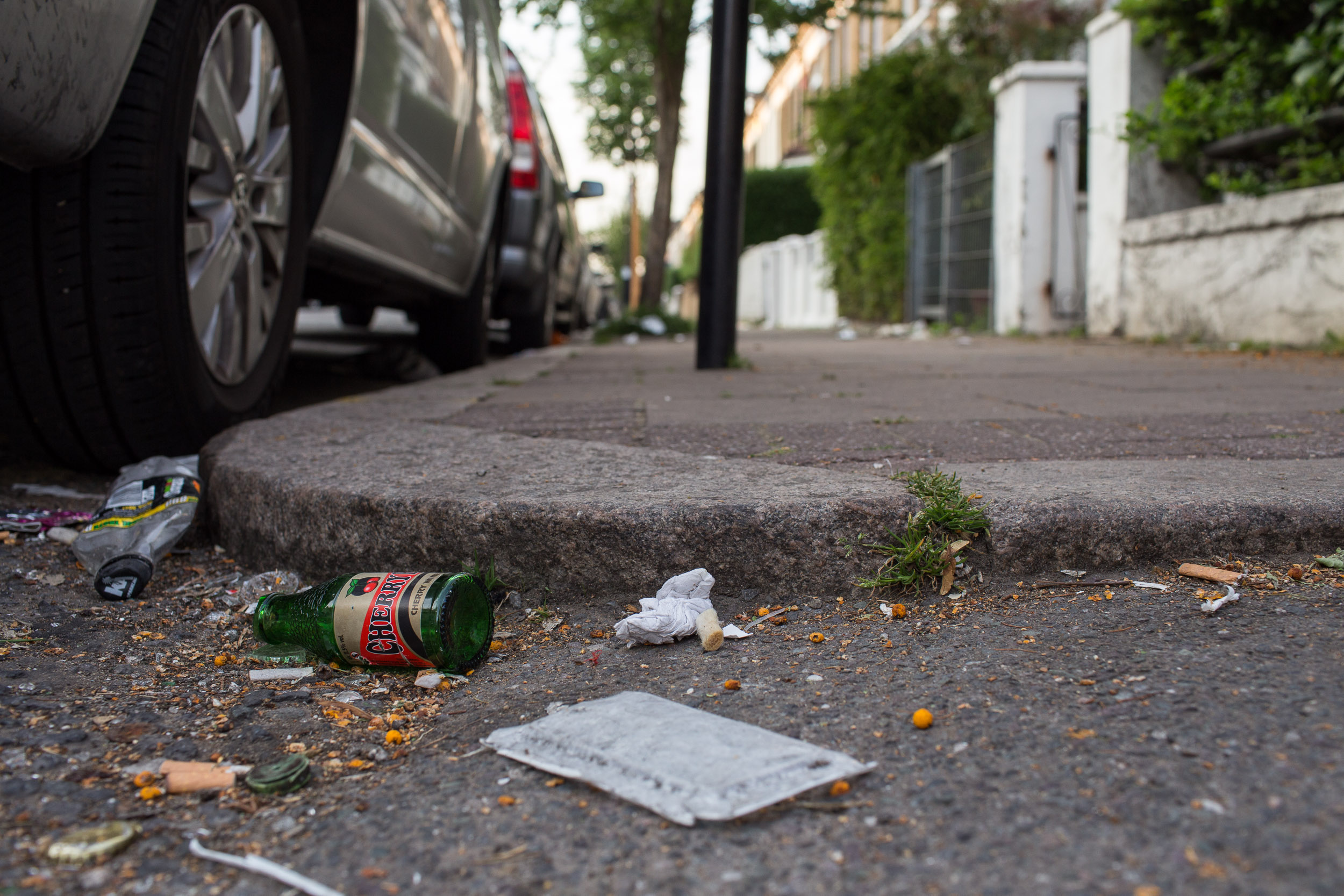just nipping to the shops
Toni lives in Brixton with her three chocolate Labradors – Macy, Harry and Dollie. They can be a handful at times, but they’re the loves of her life. She says she’d be lost without them.
Toni grew up with her brother and two sisters in a small Staffordshire mining town. Her father was a violent man. When she was 15 he dragged her down a flight of stairs by her hair and repeatedly stamped on her back.
Years later, when her back pain became unbearable, an MRI scan revealed multiple crush fractures to her spine. But it also uncovered a series of other profound back disorders, including arthritis, degenerative disc disease, sciatica and lateral recess stenosis.
The consultant told her she had the back of a 70 year old. She was 29.
These conditions cause her constant pain – but her spine is only part of the problem. In 1997 Toni was diagnosed with persistent viral fatigue, which developed into ME. This leaves her exhausted, unable to concentrate and suffering frequent migraines.
A separate condition called endometriosis led to eight unsuccessful laser surgeries, before she was forced to have her womb removed at 32. The operations left her with extensive internal scars that frequently tear, causing her further pain.
In 2005 her GP confirmed that she had arthritis in her hands and wrists, as well as her back. Her body simply does not work as it should.
Today, aged 49, making even short trips is a major undertaking. Most of the time she’s housebound – a dog walker takes the Labs out.
Her local shops are just over a kilometre away. According to Google Maps it should take 30 minutes to walk there and back. For Toni, it involves two hours of prep and a three hour round trip. Painkillers, strong coffee, energy drinks, stout shoes and a saddlebag on Harry’s back make it possible. She only attempts it about once a month these days.
Toni can still walk, albeit unsteadily, so she doesn’t use a wheelchair. For her it’s a symbol of defeat. But the arthritis in her wrists is so bad now that even a stick is a problem.
The journey is treacherous, filled with obstacles that an able-bodied person would barely notice. Litter, puddles, tree roots, uneven paving stones, curbs, pedestrians and cyclists have all caused her to stumble and fall.
When she’s walking, hunched and staring straight down, Toni’s world is limited to what’s in front of her feet. She says she sometimes wishes she had eyes in her toes.
Aside from the pace she walks at, Toni shows no outward signs of disability. Once, she tripped and fell in front of a police car, but they didn’t come to her aid. She assumes people think she’s drunk.
The 2011 Census revealed that there are 9.4 million people living with disabilities in the UK, but the Office for Disability Issues estimates that just eight percent use wheelchairs or have other externally visible impairments.
Pedestrians are the toughest obstacle of all. When she reaches Brixton Road, crowds are unavoidable.
People get frustrated by the speed she walks at and push past her. Bicycles, buggies and wheeled bags knock her as they pass. The throng blocks her view of potential hazards. She’s constantly forced to stop and start, which she finds exhausting.
Toni used to drive to the shops – but in 2014 an administrative error by the Department for Work and Pensions meant her disability benefits were cut and blue badge revoked.
After a gruelling fight her benefits were finally reinstated almost a year later – but her mobility allowance has still not been restored which means she’s no longer eligible for a blue badge. Without them, she can’t afford to run a car, and without the mobility allowance she isn’t eligible for Dial-a-Ride membership.
There’s a bus stop about 500m from her door – taking one cuts 600m from her journey. When she first lost her blue badge she assumed this would be a lifeline.
In practice, she found starting then stopping at the bus stop, waiting, clambering aboard, enduring the judders and jolts to her spine, clambering off and then starting to walk again more stressful and uncomfortable than doing it all on foot.
Toni has tried to live as normal a life as possible. She has a law degree. She’s worked for a number of charities and was foster mother to two young children.
As her mobility declined, she was forced to move from working full-time to part-time to eventually working from home, until even this became impossible. With no income and no prospect of finding new work, she finally applied for what was then called Disability Living Allowance.
All she wants, she says, is to be able to live as physically independently as possible – but it feels like an increasingly distant dream.
By the time she reaches home, she’s shaking. Her legs feel like lead, her brain like sponge. She’s nauseous and drained. It can take her several days to recover.
Despite having some benefits restored, Toni’s situation is far from secure. Regardless of the medical evidence and the degenerative nature of her conditions, she has to regularly reapply. She’s already afraid of the next application.
With no prospect of her blue badge or mobility allowance being restored, for the foreseeable future at least the long walk to Brixton still looms.
Toni asked not to be identified for fear of being targeted by burglars or muggers. She has previously been the victim of an aggravated burglary. This story was first published on my blog, Lambeth: Living with the Cuts, in April 2017.
share this story
If you found this story interesting, please consider sharing it.






















